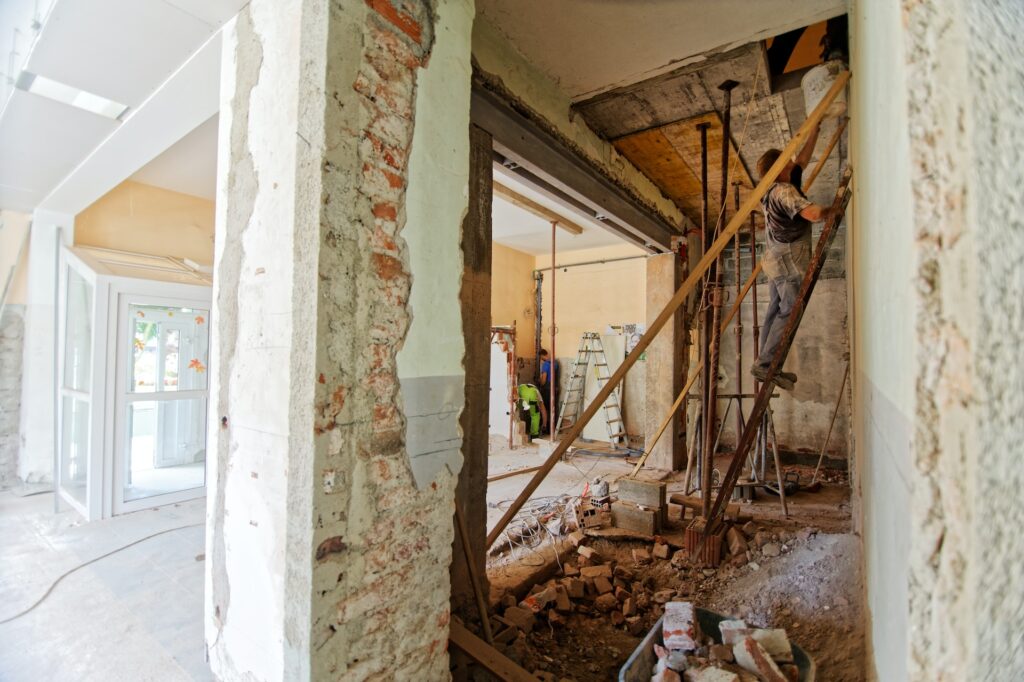
Chris Town Here, Owner Of Town Construction And Development Here With Some More Great Tips: Acoustically Comfortable Seattle Living Space.
Unwanted noise can disrupt your peace, but with the right techniques and solutions, you can achieve a harmonious environment that promotes relaxation and well-being. So, let’s explore practical tips and innovative methods to help you conquer noise and create an acoustically comfortable living space!
Assessing your current acoustic situation
Assessing your current acoustic situation is the first step to improving your home’s sound environment. Start by identifying the sources of noise within your living space. Are they external, like traffic or neighbors, or internal, such as appliances or footsteps? Using a decibel meter and measuring noise levels to pinpoint areas that need attention. Recognize common acoustic problems like echoes, vibrations, or unwanted sounds penetrating your space. Understanding these issues is crucial in devising effective solutions to create an acoustically comfortable living space. Whether soundproofing walls, installing acoustic panels, or simply rearranging furniture, a clear assessment guides your efforts to create a more peaceful and harmonious living environment.
Acoustic design principles
Acoustic design principles are naturally the basis of your efforts to create an acoustically comfortable living space. Begin by strategically arranging furniture to optimize sound distribution throughout the room. Consider the room layout to minimize echoes using natural dimensions and shapes. The choice of materials also plays a pivotal role in acoustical enhancement, with softer surfaces absorbing sound and reducing noise levels. By prioritizing these principles, you can transform your home into a retreat of tranquility. So, these foundational strategies pave the way for a sound environment that promotes relaxation!
Of course, pick out the right speakers for your home, too!
Soundproofing techniques
Soundproofing techniques help create an acoustically comfortable living space and a healthier home environment. After all, implementing these strategies can effectively minimize unwanted noise, promoting a sense of calm and well-being. Start by adding weather stripping to doors and windows and sealing off avenues for noise intrusion. Addressing gaps and cracks in walls and ceilings further bolsters your soundproofing efforts. Installing soundproof curtains or blinds adds a stylish touch to your decor and acts as a barrier against external noise, too. Collectively, these techniques contribute to a quieter and more peaceful home, reducing stress and enhancing your overall quality of life. So, whether you’re looking for a serene space to work, relax, or sleep, incorporating soundproofing methods is a surefire solution.
Acoustic panels and diffusers
Acoustic panels and diffusers are remarkable tools for sculpting a harmonious living space. These purpose-designed elements help control sound by absorbing or diffusing it, ensuring a more tranquil environment. Acoustic panels are typically installed on walls or ceilings and act as sound absorbers, reducing echoes and improving sound quality. Diffusers, on the other hand, scatter sound waves, preventing them from bouncing back and creating unwanted noise reflections. These acoustic enhancements can be strategically targeted to specific areas, such as home theaters, offices, or open-plan living spaces.
These panels can do wonders for your home’s aesthetic, too!
Flooring choices
Selecting the right flooring choices can significantly impact the acoustics of your living space. Different flooring materials have varying effects on sound absorption and reflection. For instance, carpets and rugs made of plush, soft materials can absorb sound waves, reducing noise levels and minimizing echoes. On the flip side, hardwood and laminate flooring tend to reflect sound, potentially increasing noise in your home. When choosing flooring, consider factors like room function, personal preferences, and the existing acoustic environment. In open areas, rugs and carpets can be strategically placed to dampen sound. Conversely, carpeted flooring can create a quieter ambiance in spaces like home offices or bedrooms. By carefully considering your flooring choices, you can strike a balance between aesthetics and acoustics.
Soundproofing walls and ceilings
Soundproofing walls and ceilings can be immensely useful when trying to create an acoustically comfortable living space. Installing resilient channels, soundproof drywall, or acoustic insulation can drastically reduce the transmission of unwanted noise. However, it’s essential to remember that such remodeling often creates a lot of mess, so you must get your belongings out of your home. As such, it’s smart to look into how to store items during a home renovation, either in self-storage units or other suitable options, to keep everything in a safe place. While the process might involve some inconvenience and temporary displacement, the long-term benefits of soundproofed walls and ceilings are well worth it. You’ll enjoy a quieter, more serene environment, enhancing your overall quality of life!
Noise reduction through decor
Noise reduction through decor is a creative and functional way to enhance your living space’s acoustics. By strategically incorporating decor elements, you can both absorb and diffuse sound, effectively minimizing unwanted noise. Consider using soft furnishings like plush cushions and curtains made of sound-absorbing materials to reduce echoes. Artwork, decorative panels, or wall hangings can serve a dual purpose by adding aesthetic appeal while helping to control sound reflections. Moreover, strategically placing bookshelves, plants, or decorative room dividers can break up sound waves, reducing noise pollution. When selecting decor items, prioritize those with acoustic properties to blend style with functionality seamlessly. Doing so can create a more peaceful and tranquil atmosphere within your home.
The right décor, smart or otherwise, can do wonders for sound cushioning!
Smart home technology for noise control
If you make use of smart home tech, you can do a lot to make a comfortable living space. For example, smart speakers and soundproofing apps can help monitor and control noise levels in real time. These gadgets enable you to adjust settings and create customized soundscapes, ideal for relaxation or focus. Integrating smart blinds and curtains also allows you to regulate external noise intrusion effortlessly. By automating their operation, you can ensure your space remains serene and quiet when needed most. With the help of sensors and intelligent algorithms, smart home technology for noise control has revolutionized how we experience and manage sound within our living spaces. It’s a seamless and effective way to create an acoustic environment that adapts to your needs.
A home that fosters peace
Mastering the art of sound control empowers you to create an acoustically comfortable living space where tranquility reigns supreme. By implementing the strategies and solutions discussed, you can bid farewell to disruptive noise and welcome a serene ambiance into your daily life. Whether through acoustic panels, decor, or smart technology, the path to acoustic comfort is within your reach, ensuring a home that reflects your peace and harmony!



